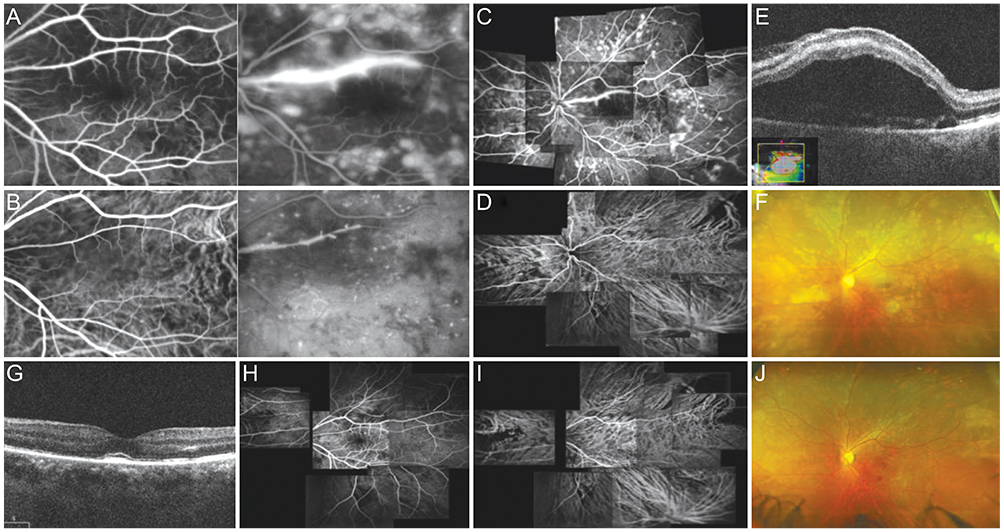Korean J Ophthalmol.
2014 Oct;28(5):424-426. 10.3341/kjo.2014.28.5.424.
Treatment of Serous Retinal Detachment Associated with Choroidal Ischemia with Intravitreal Bevacizumab Following Brain Surgery
- Affiliations
-
- 1Institute of Vision Research, Department of Ophthalmology, Yonsei University College of Medicine, Seoul, Korea. minkim76@yuhs.ac
- KMID: 2344268
- DOI: http://doi.org/10.3341/kjo.2014.28.5.424
Abstract
- No abstract available.
MeSH Terms
-
Angiogenesis Inhibitors/*therapeutic use
Bevacizumab/*therapeutic use
Choroid/*blood supply
Ciliary Arteries/pathology
Fluorescein Angiography
Humans
Intravitreal Injections
Ischemia/*drug therapy/etiology/physiopathology
Male
Meningeal Neoplasms/surgery
Meningioma/surgery
Neurosurgical Procedures/*adverse effects
Retinal Detachment/*drug therapy/etiology/physiopathology
Subretinal Fluid
Vascular Endothelial Growth Factor A/antagonists & inhibitors
Visual Acuity/physiology
Young Adult
Angiogenesis Inhibitors
Bevacizumab
Vascular Endothelial Growth Factor A
Figure
Reference
-
1. Hayreh SS. Segmental nature of the choroidal vasculature. Br J Ophthalmol. 1975; 59:631–648.2. Loeffler KU, Hayreh SS, Tso MO. The effects of simultaneous occlusion of the posterior ciliary artery and vortex veins: a histopathologic study. Arch Ophthalmol. 1994; 112:674–682.3. Vinores SA, Youssri AI, Luna JD, et al. Upregulation of vascular endothelial growth factor in ischemic and non-ischemic human and experimental retinal disease. Histol Histopathol. 1997; 12:99–109.4. Kaur C, Sivakumar V, Yong Z, et al. Blood-retinal barrier disruption and ultrastructural changes in the hypoxic retina in adult rats: the beneficial effect of melatonin administration. J Pathol. 2007; 212:429–439.5. Kim M, Kwon HJ, Lee SC. Spontaneous resolution of posterior ciliary artery occlusion. Graefes Arch Clin Exp Ophthalmol. 2013; 251:1005–1006.
- Full Text Links
- Actions
-
Cited
- CITED
-
- Close
- Share
- Similar articles
-
- Serous Retinal Detachment Following Combined Photodynamic Therapy and Intravitreal Bevacizumab Injection
- A Case of Intravitreal Bevacizumab Injection for the Treatment of Choroidal Neovascularization in Morning Glory Syndrome
- Takayasu's Arteritis Associated with Serous Retinal Detachment
- The Short-term Effect of Intravitreal Bevacizumab for Treatment of Central Serous Chorioretinopathy
- Laser Photocoaculation Treatment in a Case of Circumscribged Choroidal hmangioma Associated with Serous Retinal Detachment


